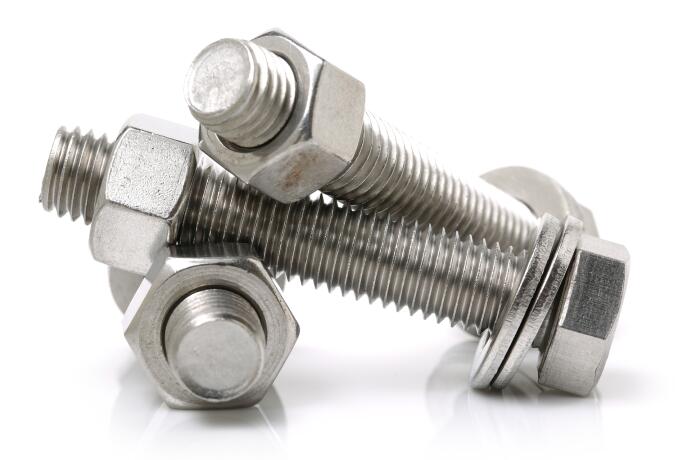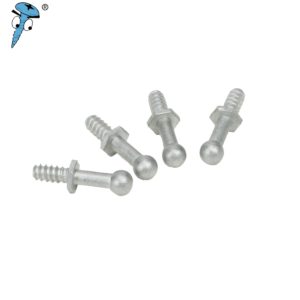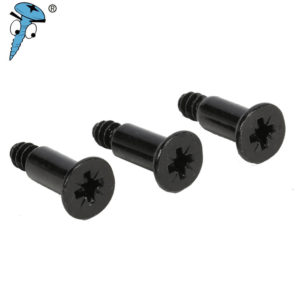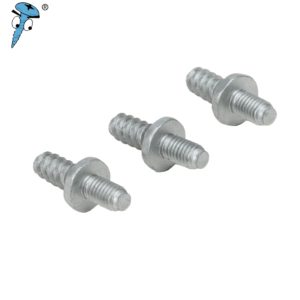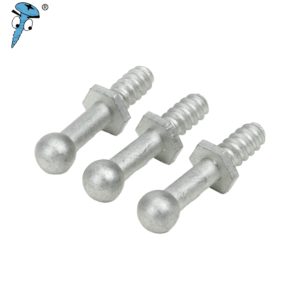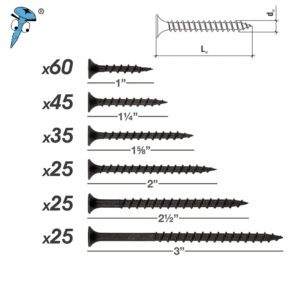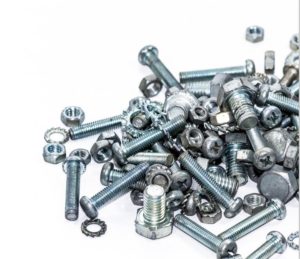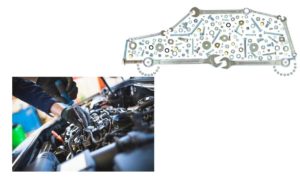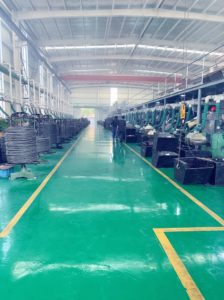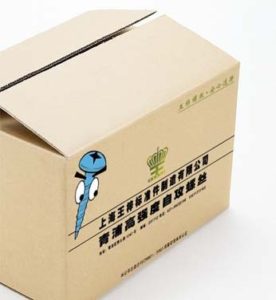Prince Fastener:Properties of stainless steel fasteners and their classification
Stainless steel fasteners are mainly made of stainless steel wire as raw materials, followed by a series of processes such as piercing and beating by the steps of the production of standard parts; the use of stainless steel for the manufacture of fastener products has been prevalent. Stainless steel fasteners have the following properties:
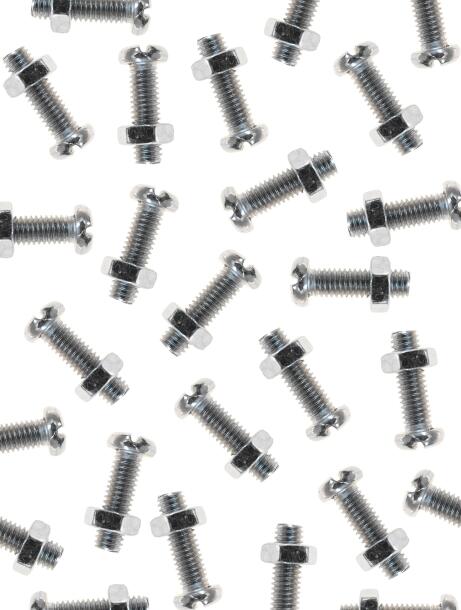
First is the high-temperature resistance of stainless steel fasteners. As the hardness of stainless steel itself is relatively strong, after the production of fasteners have an anti-oxidation solid ability, and under high temperature is not able to work usually, will not be too much interference by high temperature, if you can be passivated at the same time after the furniture manufacturer, then the effect will become better and better.
Second, the physical properties of stainless steel fasteners, with a relatively high electric negative rate. There is a coefficient of expansion; after the test, we know that the higher the temperature, the higher the expansion coefficient of stainless steel fasteners will inevitably increase. Compared with carbon steel wire, we can see that the electro-negative rate of stainless steel fasteners than carbon steel is five times higher.
Third, the force capacity of stainless steel fasteners, for stainless steel fasteners, can withstand the load is relatively medium, although not comparable with high-strength bolts, and meets ordinary people’s needs.
Fourth, the mechanical properties of stainless steel fasteners. In the mechanical properties, we can know a lot of stainless steel wire has a lot to do with. For example, it will not rust; the nature of stainless steel follows high corrosion resistance has a great relationship; with the continuous development of standard parts, these mechanical properties have become stronger and stronger.
A wide range of specifications characterizes fasteners, the performance uses vary, and standardization, serialization, and generalizing the high degree. The materials commonly used in the manufacture of fasteners are carbon steel, low-alloy steel, and non-ferrous metals.
The material of stainless steel can be divided into:
- Standard austenitic stainless steel.
- Martensitic stainless steel.
- Ferritic stainless steel.
- Precipitation hardening stainless steel.

The starting point for the selection of fasteners is the process method, and the method depends on the size and shape of the fastener and the number. Among them is the standard austenitic stainless steel, commonly used grades for 302, 303, 304, 305 four grades, the so-called “18-8” type austenitic stainless steel these four grades. Whether it is corrosion resistance or its mechanical properties are similar.
Type 302 is used in the manufacture of screws and self-tapping bolts.
Type 303 has a small amount of sulfur added to improve performance and is mainly used for standard nuts.
Type 304 is used for warm upsetting, such as long-size and large-diameter bolts.
Type 305 is used to manufacture fasteners by the cold heading process, such as cold-formed nuts and hexagonal bolts.
Type 309 and 310, their chromium and nickel content are higher than 18-8 stainless steel, suitable for high-temperature fasteners manufacturing.
Type 316 and 317 contain the alloy element manganese, so their high-temperature strength and corrosion resistance are higher than 18-8 stainless steel.
Type 321 and 347, type 321 contains a more durable alloying element, titanium, type 347 contains niobium, which improves the material’s resistance to intergranular corrosion.
3. How to reduce the chances of locking stainless steel fasteners?
Fasteners in the metal fasteners often occur for various reasons of corrosion, corrosion in the occurrence of some fasteners will appear completely locked problem, resulting in the loss of effectiveness of the operation of the fastener itself, that is, can not be removed or continue to lock the fastener. The complete locking of fasteners may occur in just a few seconds, so to more correctly understand and use fasteners to prevent locking occurs.
1、The cause of fastener lock-up
Once the metal surface of the fastener is damaged, an oxide layer will appear to protect against the intensification of rust and corrosion. This is because these metal materials themselves can prevent rust and corrosion. Still, when the fastener is locked, the pressure and heat generated by force applied will destroy the oxide layer, causing the metal threads to block or shear, and then the phenomenon of adhesion, that is, locking.
2、Ways to avoid locking fasteners.
★ Fastener lock-up can not be eliminated, but we can pay attention to various factors to reduce the chances of lock-up, such as ensuring the load capacity of the fastener, choosing more tensile strength screws and nuts, etc.
When the threads are rough or not clean, lock-up will occur more often, so make sure the fasteners are cleaned before use to remove iron filings or dirt.
★ Fasteners in the correct and appropriate lubrication treatment, metal parts due to the heat generated by force will be effectively reduced, which will also correspondingly reduce the chances of a fastener locking situation.
★ Using washers and installed correctly, fasteners are also less likely to lock up. 4.
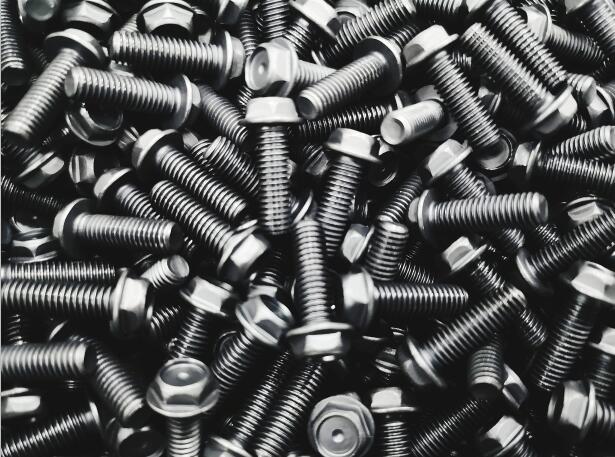
4. Fasteners with stainless steel wire selection principles and identification of several methods
Most stainless steel materials can be made of steel wire or bar for fastener production; there are austenitic stainless steel, ferritic stainless steel, martensitic stainless steel, precipitation hardening stainless steel. On the fastener stainless steel wire selection of materials, screw master is this: fasteners are mechanical foundation parts, the demand is excellent, usually bolts, screws, rivets, etc. to ensure safety or generally do not have to consider the impact of temperature harsh environment or other dangerous working conditions. Commonly used materials are carbon steel, low-alloy steel, and non-ferrous metals. But on specific occasions, fastener materials need to meet the severe corrosion or high strength conditions, there are much stainless steel and ultra-high-strength stainless steel came into being.
Through careful and integrated consideration of these five aspects, the final determination of the choice of fastener grades, varieties, specifications, material standards.
1, the fastener material in terms of mechanical properties, especially the strength requirements. 2, the working conditions of the material corrosion resistance requirements. 3, the material heat resistance performance (high-temperature strength, oxidation resistance) requirements. 4、fastener Production process requirements for material processing performance. 5, other aspects, such as weight, price, procurement factors, should be considered.
Austenitic stainless steel
Austenitic stainless steel is stainless steel with the austenitic organization at room temperature.
Austenitic chromium-nickel stainless steel, including the famous 18Cr-8Ni steel, and based on this increase in Cr, Ni content and the addition of Mo, Cu, Si, Nb, Ti, and other elements developed by the high Cr-Ni series of steel.
The most commonly used austenitic stainless steel is Fe-Cr-Ni system alloy (i.e., the U.S. AISI300 system); Fe-Cr-Ni-Mn system (i.e., the U.S. AISI200 system); special austenitic stainless steel, and other three.
The commonly used grades are 302, 303, 304, 305 four grades, the so-called “18-8” type austenitic stainless steel. Whether it is corrosion resistance or its mechanical properties are similar. The starting point for selection is the fastener production process method, which depends on the size and shape of the fastener and depends on the number of production.
Type 302 is used for screws and self-tapping bolts that are machined. Type 303 is used for nuts machined using bar stock with a small amount of sulfur added to the stainless steel to improve cutting properties.
Type 304 is used when processing fasteners using the hot heading process, such as longer gauge bolts large diameter bolts, which may be beyond the scope of the cold heading process. Type 305 is suitable for processing fasteners by cold heading process, such as cold-formed nuts hexagonal bolts. Type 309 and 310, their Cr and Ni content are higher than the 18-8 stainless steel, suitable for fasteners working at high temperatures. Types 316 and 317 contain the alloying element Mo, so their high-temperature strength and corrosion resistance are higher than 18-8 stainless steel. Type 321 and Type 347, Type 321 contains the more stable alloying element Ti, and Type 347 contains Nb, thus improving the material’s resistance to intergranular corrosion. Suitable for fasteners that are not annealed after welding or in service from 420 to 1013°C.
Ferritic stainless steel
Ferritic stainless steel (400 series) containing chromium in 15% to 30%, with a body-centered cubic crystal structure. This type of steel generally does not contain nickel, sometimes also contains a small amount of Mo, Ti, Nb, and other elements, this type of steel has a large thermal conductivity, small expansion coefficient, good oxidation resistance, excellent stress corrosion resistance, etc., more for the manufacture of atmospheric, water vapor, water, and oxidizing acid corrosion parts. Generally can be divided into ordinary ferritic stainless steel and high purity ferritic stainless steel, two categories.
1, Ordinary ferritic
This type of steel includes low, medium, and high chromium content. Low chromium ferritic stainless steel has a chromium content of about 11% to 14%, such as China’s 00Cr12 and 0Cr13Al. United States AISI400, 405, 406MF. Such steel has good toughness, plasticity, cold deformability, and weldability. Because the steel contains a certain amount of chromium aluminum, there is a good oxidation resistance and stainless steel. Four hundred five can be used as petroleum refining tower, tank lining, steam turbine blades, high-temperature sulfur corrosion-resistant devices, etc. 400 used for home and office appliances, etc. 409 used for automotive exhaust muffler system devices and cold, warm water pipes, etc. Medium chromium ferritic stainless steel, the chromium content of 14% to 19%, such as China’s 1Cr17, 1Cr17Mo. The United States of AISI429, 430, 433, 434, 435, 436, 439. such steel has good rust and corrosion resistance. 430 is used for building decoration, automobile decoration, kitchen equipment, gas burner, nitric acid industrial device parts, etc. 434 is used for automobile exterior decoration of the building. 439 is used for gas water heater, coal, gas pipeline hose, etc. High chromium ferritic stainless steel contains 19% to 30% chromium, such as China’s Cr18Si2, Cr25, the United States of AISI442, 443, 446. such steel has good oxidation resistance. Four hundred forty-two used intermittently in the atmosphere, the upper temperature of 1035 ℃, the maximum temperature of continuous use of 980 ℃. 446 has better oxidation resistance.
Type 430 ordinary chromium steel, which has better corrosion resistance and heat resistance than type 410, is magnetic. Still, it cannot heat treatment to strengthen, suitable for while corrosion resistance and heat resistance performance are slightly higher, the strength requirements of general stainless steel fasteners.
2、High purity ferritic
This type of steel contains deficient carbon, nitrogen; high chromium, molybdenum, titanium, niobium, and other elements. Such as China’s 00Cr17Mo, 00Cr18Mo2, 00Cr26Mol, 00Cr30Mo2 foreign 18-2, Cr26Mol, 25Cr-5Ni-4Mo-Nb, Monit, Al29-4, Al29-4-2. These steels have good mechanical properties (especially toughness), welding properties, intergranular corrosion resistance, pitting corrosion resistance, crevice corrosion, excellent stress corrosion rupture resistance. For example, 18-2 has good corrosion resistance in nitric acid, acetic acid, NaOH, and pitting resistance in 3% NaCl and FeCl3 is comparable to or exceeds 18-8 austenitic, and SCC resistance far exceeds that of 18-8 steel. 26CrMo steel is corrosion resistant in many media, especially organic acids, oxidizing acids, and strong bases. Strong chloride media has good pitting resistance—no stress corrosion cracking in chlorides, hydrogen sulfide, excess sulfuric acid, and strong alkalis. 30Cr-2Mo has a higher resistance to pitting and crevice corrosion while maintaining stress corrosion resistance. Steel with a small amount of nickel to improve performance in reducing acids.
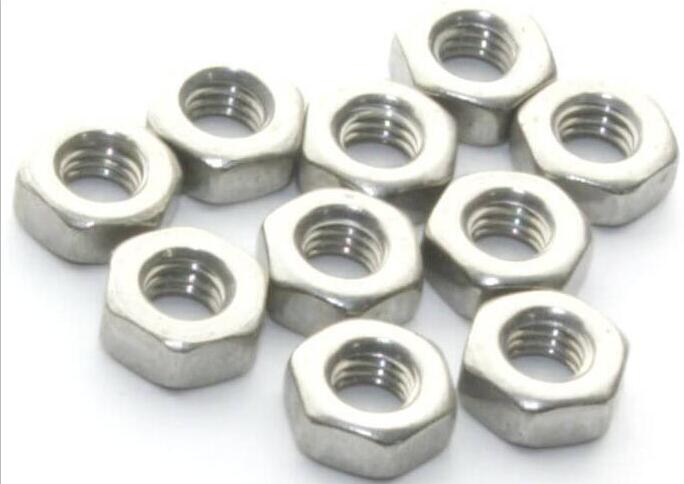
Martensitic stainless steel
Stainless steels whose mechanical properties can be adjusted by heat treatment are a class of hardenable stainless steels in layman’s terms. Typical grades are Cr13 type, such as 2Cr13, 3Cr13, 4Cr13, etc. After quenching, the hardness is high, and different tempering temperatures have different strength and toughness combinations, mainly used for steam turbine blades, tableware, surgical instruments. According to the differences in chemical composition, martensitic stainless steel can be divided into two categories: martensitic chromium steel and martensitic chromium-nickel steel. The differences in organization and strengthening mechanism can also be divided into martensitic stainless steel, martensitic and semi-austenitic (or semi-martensitic) precipitation hardening stainless steel, and martensitic aging stainless steel.
Standard martensitic stainless steel is 403, 410, 414, 416, 416 (Se), 420, 430, 431, 440A, 440B and 440C type, magnetic; the corrosion resistance of these steels from the “chromium,” which ranges from 11.5 to 18%, the higher the chromium content of the steel needs carbon The higher the chromium content, the higher the carbon content to ensure the formation of martensite during heat treatment, the above three types of 440 stainless steel are rarely considered for applications requiring welding. The melt filler metal of 440 compositions is not readily available.
Type 410 and 416 can be heat-treated and strengthened, hardness in 35 to 45HRC, good machinability, for general purpose heat-resistant corrosion-resistant fasteners. 416 type contains a slightly higher sulfur content is easy to cut stainless steel. Type 420, sulfur content ≧ 0.15%, mechanical properties improved, heat-treated and strengthened, the maximum hardness value of 53 ~ 58 HRC, used for fasteners requiring higher strength.
Standard martensitic steel improvement, containing classes such as nickel, molybdenum, vanadium, and other added elements, mainly for the standard steel restricted allowable working temperature to higher than 1100K when adding these elements, the carbon content also increases, with the increase in carbon content, the problem of avoiding cracking in the hardened heat-affected zone of the weld becomes more serious.

Precipitation-hardening stainless steel
Precipitation hardening stainless steel (precipitation hardening stainless steel) refers to the chemical composition of stainless steel based on the addition of different types and quantities of strengthening elements, precipitation hardening process through the precipitation of different types and quantities of carbides, nitrides, carbonitrides, and intermetallic compounds, both to improve the strength of steel and maintain sufficient toughness of a class of High strength stainless steel, referred to as PH steel. According to its metallographic matrix organization, Precipitation hardening stainless steel can be divided into martensitic, semi-austenitic, and austenitic type 3 categories.
Precipitation hardening stainless steel has a combination of high strength, high toughness, high corrosion resistance, high oxidation resistance, excellent formability, weldability, etc.
1, 17-4PH, PH15-7Mo, they can get higher strength than the usual 18-8 type stainless steel and thus are used for high-strength, corrosion-resistant stainless steel fasteners.
2, A-286, non-standard stainless steel, than the commonly used 18-8 type stainless steel has higher corrosion resistance, and in the temperature increases still have good mechanical properties. Used as a high-strength, heat-resistant, corrosion-resistant fastener, it can be used to 650 ~ 700 ℃.
